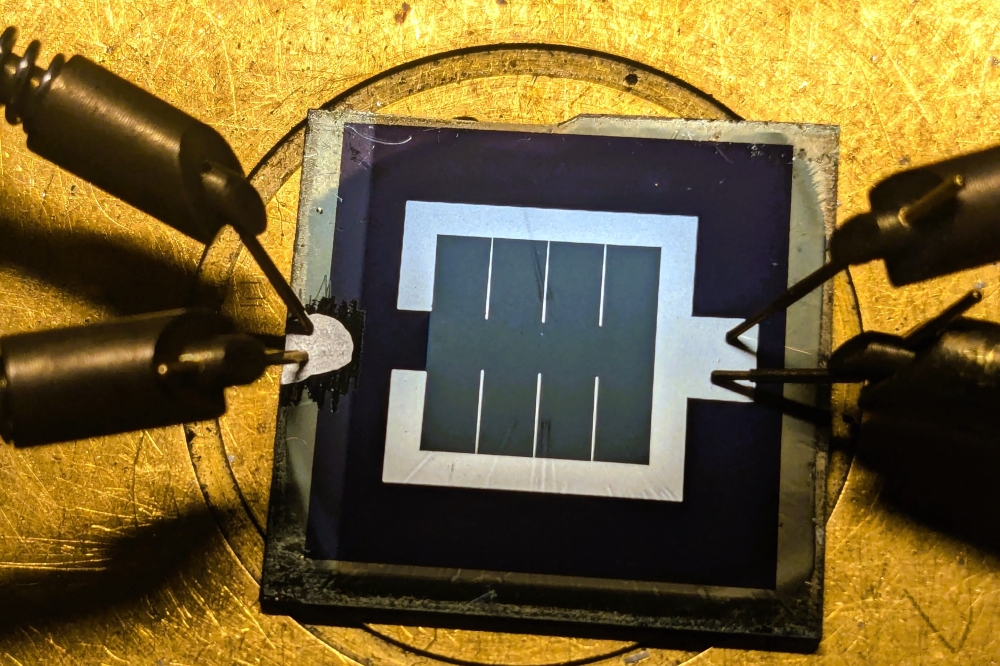Move over magnetron

Do the latest LDMOS and GaN RF power devices mark the end of the magnetron-based microwave, asks Compound Semiconductor?
Solid state RF energy is set to be provide a more controllable power and heating source.
While many in the solid-state RF power industry have been fixated with getting LDMOS, and now GaN-based, power amplifiers into base stations, an up and coming market is now providing power device manufacturers with a lot of food for thought.
Your typical microwave oven currently relies on magnetron tubes to generate the electromagnetic waves required to cook its contents.
But slot in a solid state RF power source instead and you could more precisely control the energy delivered to different parts of an oven. Beyond simply controlling power levels, energy delivery can also be optimised by tuning the frequency, according to conditions, and contents within the oven.
Benefits such as this have not been lost on appliance OEMs, such as E.G.O. Elektro-Gerätebau and Whirlpool, and late last year, these industry players joined forces with components manufacturers to form the RF Energy Alliance (RFEA).
The small but growing consortium - including MACOM and recent NXP spin-off, Ampheon - intends to drive the developments of standards to promote solid state RF Energy.
As RFEA executive director, Klaus Werner, tells Compound Semiconductor: "Our roadmap is now developed and is going to focus discussions very nicely on the industry sweetspots."
So how exactly would the solid state RF oven work? According to Werner, the microwaves are generated in fundamentally the same way as traditional RF power generation, using a solid state RF power amplifier and signal conditioning.
However, instead of being sent to an antenna to transmit data, RF energy is channeled via waveguides into an oven to heat the contents.
Indeed, earlier this year, NXP Semiconductors unveiled its 'Sage' solid-state RF oven proof-of-concept that promised to control exactly where, when and how much energy was directed into food.
And as Werner highlights: "I also expect to see both Whirlpool and E.G.O. Elektro-Gerätebau with [a solid state RF oven] in the market place next year and know of related companies that are also looking to launch products in 2016."
"These first generation ovens will not be able to beat magnetron [products] on price, but will provide better control to the customer," he adds.
Small and efficient
At the heart of these first ovens, lies the all-important LDMOS RF transistor, which has been instrumental to getting solid state RF energy to market.
Laughingly, Werner refers to past RF power devices as 'beasts' but highlights how the latest generation of smaller and efficient LDMOS devices has enabled solid state RF power to reach consumer applications.
For example, NXP, for one, has delivered myriad devices operating at 2.45 GHz and 915 MHz for RF energy applications, and its recent spin-off, Ampleon, now hopes to reap the rewards.
As Rob Hoeben, vice president business unit manager of multi-market and RF energy at the new company puts it: "We have worked relentlessly to design and implement transistors in magnetron-based applications, and now see a lot of growth potential in the market on top of existing base station applications."
"Many customers that have been used to working with magnetron elements are now hoping to adopt solid state power in their designs. We expect that the market will grow, so this is all good," he adds.
![]() Ampleon's Rob Hoeben: "The cost sensitive nature of RF Energy applications will favour LDMOS over any GaN technology, at least for the coming five years."
Ampleon's Rob Hoeben: "The cost sensitive nature of RF Energy applications will favour LDMOS over any GaN technology, at least for the coming five years."
However, Hoeben believes that LDMOS, rather than GaN-on-silicon or GaN-on-SiC, transistors will be the first to find a space in this new market.
"We have both LDMOS and GaN-on-SiC technology amongst our offering but when it comes to RF energy, we are focusing on LDMOS," he says. "Customers want product consistency and quality at a certain cost-point. Performance and cost are hard to meet with GaN, whatever its flavour."
"And the cost sensitive nature of RF Energy applications will favour LDMOS over any GaN technology, at least for the coming five years," he adds.
Still the vice president is open to change. As he points out, the company currently ships a lot of GaN devices to base station and aerospace markets and will be 'keeping its options open'.
"LDMOS has been through many generations of technology evolution over the last twenty years, but if GaN-on-silicon continues to reduce in cost, then of course the technology has its merits in terms of functional performance," he says.
"We are a fabless company so can consider everything," he adds.
Werner has similar thoughts on GaN-on-SiC, simply saying: "I don't currently see GaN-on-SiC in the RF energy world. This industry's players are interested in repeatability and reliability. The efficiencies [that GaN-on-SiC could bring] are not so much of an issue."
But, for the RFEA executive director, GaN-on-silicon is different. "If this technology can be manufactured in an eight inch wafer fab so the costs approaches that of LDMOS, then we really will have a great technology in our hands to work with."


































